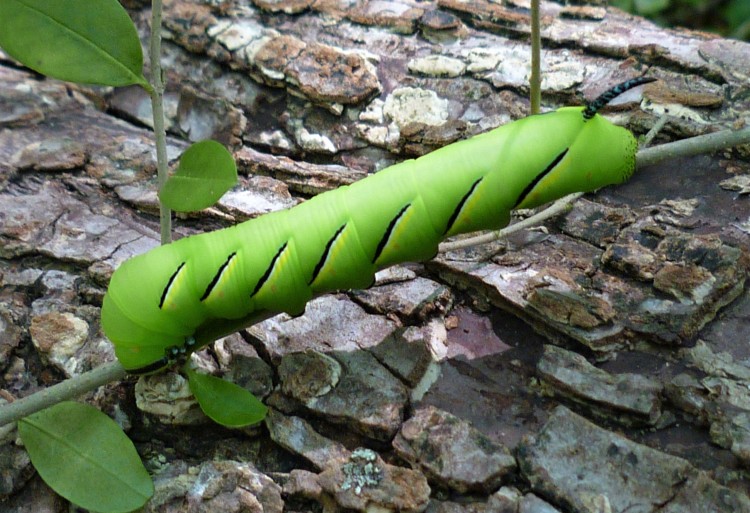
Musings on the utility or futility of exotic plant removal…
When you spend as much time as my friends and I do removing exotic (non-native) plants, there sometimes creeps in a weary suspicion that it’s all for naught. Like the fact that people everywhere spend most of their waking hours peering at tiny screens, maybe the world has changed and there’s no going back. But that’s when I’m feeling weary and frustrated. The rest of the time, just like a gardener, I can’t help but delight in the diversity of plant life that springs forth following exotic plant removal. Then come the pollinators, the caterpillars seeking their food plants, the parasitic wasps and other insect predators, and so on up the food chain!
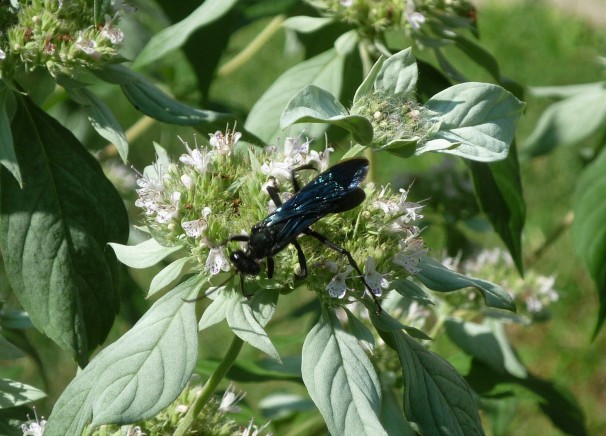
However it would be pollyana-ish to imagine we can do any more than suppress the multitude of exotic species thriving in our urban natural areas. In fact, even the term “removal” is overly optimistic – let’s substitute the more drearily patient reality of “long term management”.
But just why are these mostly-asian-in-origin plants thriving so well here? Most exotic plants are not invasive, after all. The simple explanation (actually it’s not so simple) is what scientists refer to as the “eastern asian-eastern north american floristic disjunction”. Starting roughly 250 million years ago during the Mesozoic era, there were likely at least five time periods during which land bridges between Asia and North America were present (Tiffney, 1985). Life forms freely flowed both ways during these times (we should know, as Homo sapiens may have been one of the last to make it across). When waters rose and shut down the movement, the now isolated-from-each-other plants and animals on each continent diverged slowly into closely related, but different species. Over time, the eastern forests became the last North American refuge of this once widespread flora. A not too technical good read on this subject: http://arnoldia.arboretum.harvard.edu/pdf/articles/2012-69-3-land-bridge-travelers-of-the-tertiary-the-eastern-asian-eastern-north-american-floristic-disjunction.pdf
Chinese Mantis Carolina Mantis
But what exactly does this long explanation have to do with the exotic plants found at BCSNP? As it turns out, they’re not so exotic after all on a geologic time scale. The plant species below, all commonly found in eastern forests, are now evolutionary “doppelgangers” due to their ancestor’s long isolation on both sides of the former land bridge. The first of each pair is the “invasive”, or exotic species; the second one is “native”, or endemic. Like long separated twins, they meet again in our eastern forests, where unfortunately one wreaks havoc on the other. And the exotic invasives are so successful, in part, because they left many of their pests behind. To quote my friend Conrad: “their ancestors came over to escape the tyranny of indigenous predators”.
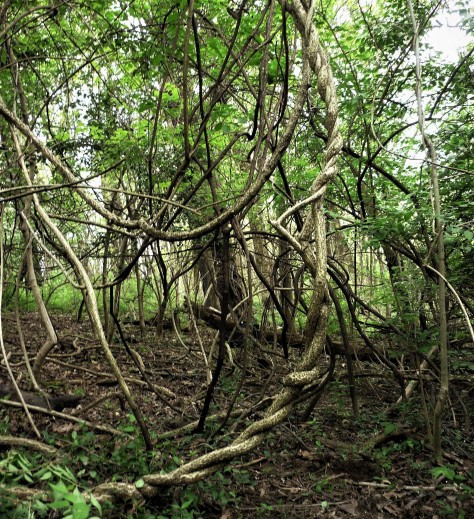
EXOTIC ENDEMIC
Asian Bittersweet / American Bittersweet
Porcelainberry / Raccoon Grape
Multiflora Rose / native Rose species
Japanese honeysuckle/ Coral Honeysuckle
Japanese Pachsandra/ Alleghany Spurge
genus Euonymus: Burning Bush / Strawberry Bush, Wahoo
Wintercreeper Euonymus fortunei, and Bush honeysuckle Lonicera maackii are in a class by themselves, seeming to have no present-day North American doppelgangers, if they ever did.
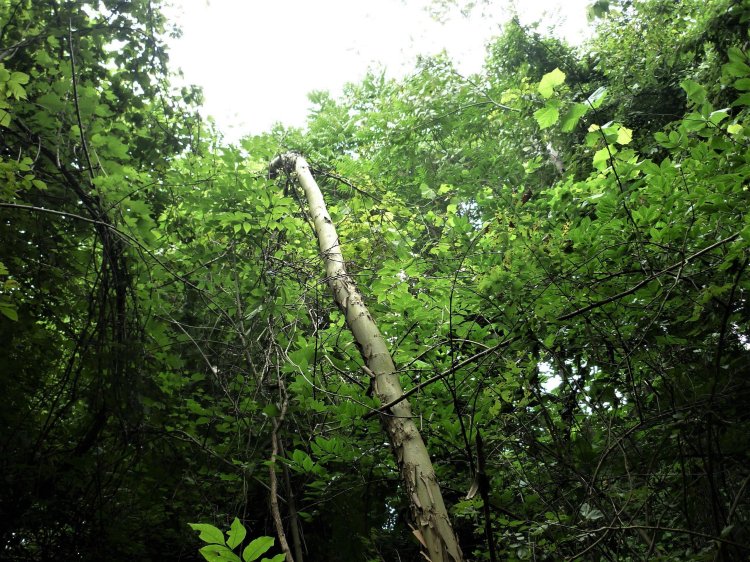
Lest you think all Asian plant species are invasive, it’s good to know that the many common species listed below also have eastern Asian counterparts. In fact, the Asian flora came out ahead species-wise; an extreme example is Spicebush, genus Lindera. In contrast to our three species, there are eighty species of Lindera in Asia.
Plant genera found in E. Asia and E. North America:
Woody: Trumpet Vine, Hickory, Catalpa, Dogwood, Honey Locust, Witchhazel, Sweetgum, Tuliptree, Maleberry, Partridgeberry, Tupelo, Pachysandra, Virginia Creeper, Sassafras
Herbaceous: Ginseng, Lopseed, Mayapple, Lizard’s tail, Skunk Cabbage
Most plants travel by wind or bird-assisted seed dispersal, and many of their insect associates can fly. So it’s easy to see how they travel long distances. But what about insects that don’t fly – did they make it across the land bridge?
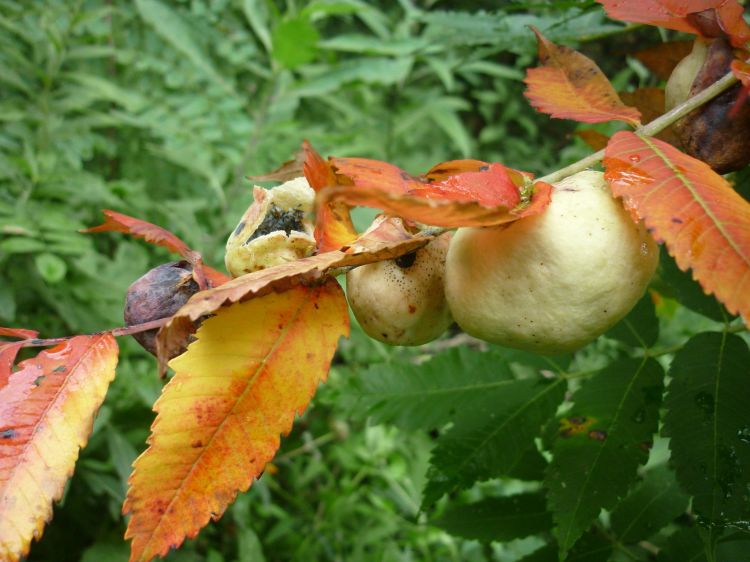
Recently I came across these large growths on some young Sumac plants at BCSNP. They’re galls of course; protective shelters for the likes of larval aphids. Gall making insects inject chemicals into a plant that distort its growth in a very particular way – it’s a great example of the often very specific relationships that have evolved between plants and insects. The aphid in this case, unsurprisingly, is called the Sumac Gall Aphid. It’s also another case of speciation by isolation that happened after the land bridges went down. The Asian and North American Sumac Gall Aphids show genetic markers of an ancient (30 million+ years) common origin. The link is to an interesting piece, The Beringian Land Bridge and the Sumac Gall Aphid, which gives more perspective on the issue of “invasive” species. http://bygl.osu.edu/node/401
Ancient relationships are one thing, recently accelerating displacements of plants, insects (and other pathogens) due to global trade are another. In the context of this post, it should be obvious why the Chestnut Blight, the Emerald Ash Borer and a whole host of other e. asian insects and pathogens have been so successful. The asian chestnut and ash trees had millions of years of association for natural selection to hone their genetics toward resistance. The North American species have had decades at most.
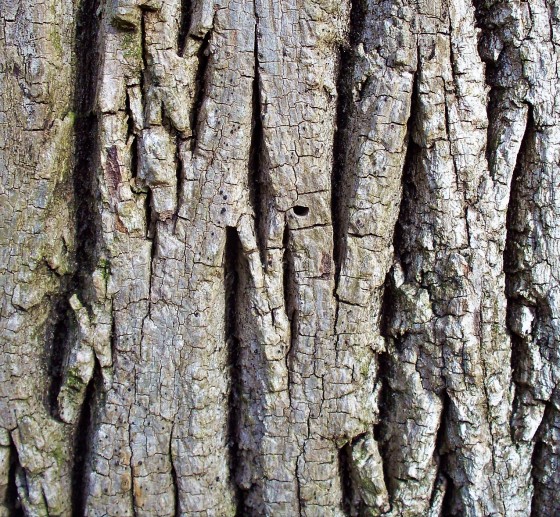
But there is one more explanation, at least, for the proliferation of exotic plants (besides the obvious fact that birds love their berries and poop them everywhere). On a human time scale, the promotion of exotic plants for landscaping depends on a favorable climate for the new introductions. The long term similarity of climate that has allowed the e. asian and e. north american floras to develop in parallel isolation, also means that e. asian plants feel “right at home” in our midwest landscapes. Bush Honeysuckle and the other asian exotics don’t thrive in the western US; in fact the floras of E. Asia and E. North America are vastly more similar to each other than that of the mostly arid west.
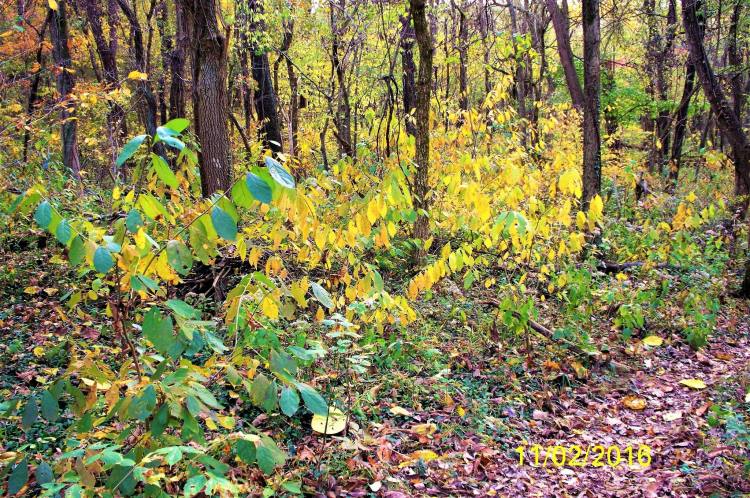
Remember Spicebush, and the 80 other species of Lindera that still occur in E. Asia? Pic above is our one common species, Lindera benzoin (the other Lindera is rare). At BCSNP we’re trying to revive and support populations of this lovely, ubiquitous, berry-dispersed shrub. The other day I saw a group of robins in a Spicebush, gorging on the ripening berries – looking forward to the day when they’re mostly pooping these into the landscape!
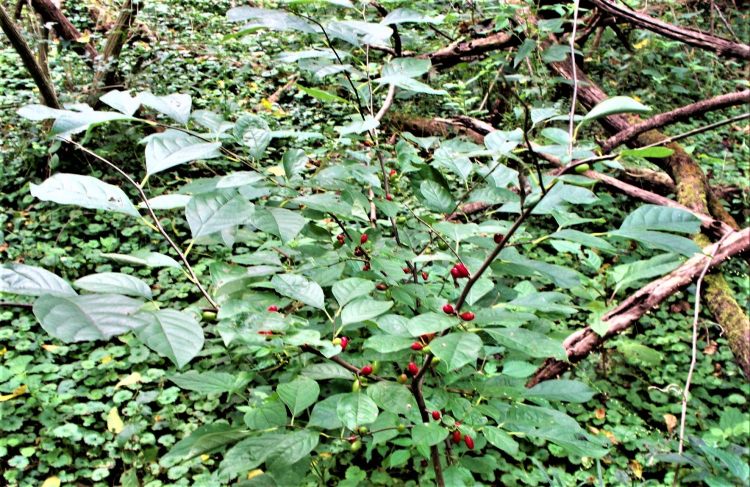
But back to the opening pic of Sphinx kalmiae – why is the caterpillar of a native species of Hawkmoth feeding on an exotic plant? Turns out there are two, likely closely related, Sphinx species whose caterpillars can feed on Privet and other members of the Olive family. The Laurel Hawkmoth (Sphinx kalmiae) is found mostly in northeastern North America (a lucky find at BCSNP). The other species, the Privet Hawkmoth, (Sphinx ligustri) inhabits a wide band of northern latitude territory stretching from western Europe to E. Asia ( where Privet is native). They look pretty similar, to the point that we first thought we’d found Sphinx ligustri at BCSNP. Can you figure out the rest of the story? If you guessed they are very closely related, (explaining why both can eat Privet) – you’re right!

So now it’s a littler harder for me to demonize invasive exotic plants or refer to them as “non-native”. Though it doesn’t mean I’ll stop removing them. With their rampant ability to overrun the landscape, they are undoubtedly the enemy of endemic plant diversity. And it’s interesting to note – in Japan, common North American “native plants” such as Black Locust, Pokeweed, Wingstem, Goldenrod, Carolina Horse Nettle, and many more are considered an invasive menace.
You’ve stuck with me through this rather complicated post, and I’ll close with some nice deer pics as a reward! These are Browntail’s two fawns, mostly off on their own and browsing green stuff ( though mom is usually not far away).
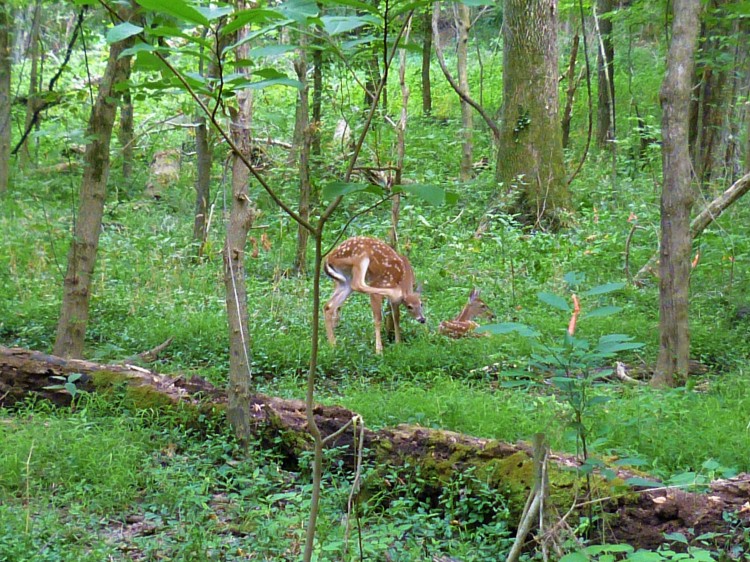
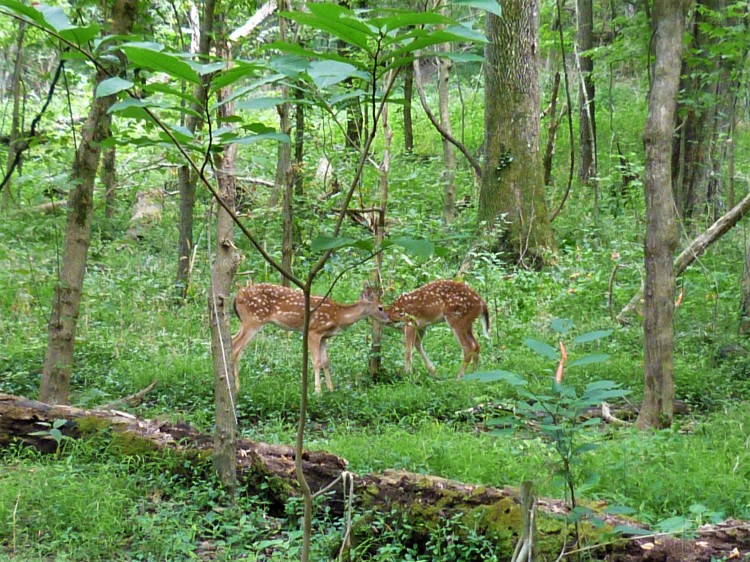
And in closing, my most recent encounter with a box turtle (#203 sighting in the data book). As you can see, this old gal has much damage to the edges of her carapace, and was previously marked in green by me. She was also quite unafraid, and extremely energetic in her efforts to get away; most turtles just retreat into their shells. I had to hold on to her leg to get the pic!
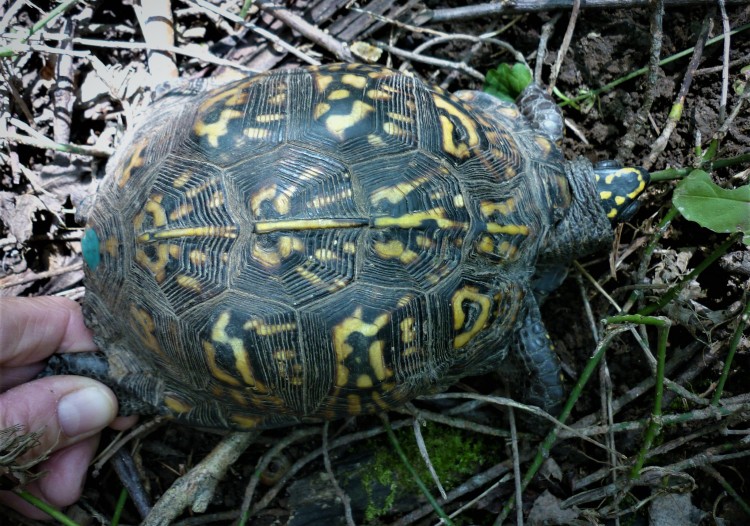


Marianna metcalf
Great post again. I read it twice because it has so many interesting facts.
Thanks Rosemary!
LikeLike
Greg Sheehan
Another great interesting blog! The next time I visit the woods I will see the plant life with a different perspective.
LikeLike
oneforestfragment
Glad you liked it! Had a good time researching this one – “phytogeography” has been a longtime interest since I hiked on the AT in my youth.
LikeLike
Jim Sky
As a part time Hawaii resident, I see a lot of invasive species devastation. I seldom see native Hawaiian birds, but instead see a host of birds from Asia, North America, and South America, many brought in by selfish people who “missed” not seeing them from their lands of origin. Of course we Europeans have been the same thing here in NA since we landed. A few years ago coqui frogs from Puerto Rico arrived in nursery plants. At first they were located in one small area, and could have been eradicated by a single person with a backpack sprayer of baking soda. Slow acting authorities never overcame their inertia and now these amazingly loud tiny frogs have changed Hawaiian nights forever. For a few years a small band of volunteers were able to keep the coqui population in our neighborhood in check. (We moved away and I am not sure how they are doing now.)
My point is that with enough hard work you can sometimes create an island on an island where invasive species do not dominate and native species at least have a fighting chance to carry on. The work you are doing at BCSNP creates one of these precious retreats for at least some native species, Thank you for that. I know it must be frustrating at times.
LikeLike
oneforestfragment
Hello Jim,
Thanks for the very thoughtful comments. Hawaiian endemic species Have of course been especially decimated. Thankfully some of the plants and animals of the eastern forests are still pretty abundant and resilient. I focus mainly on reviving/replacing sustainable plant populations, that can resist the pressures of exotic plant re-invasion and a rapidly growing deer herd. RB
LikeLiked by 1 person
Pingback: 6/1 The Best Berry You’ve Never Tasted – one forest fragment
Mark Jones
Obviously I’m replying to a much older post. I’m gradually reading my way through your blog and this particular one hit a spot with me. I’m trying to ‘restore’ about 50 acres of woodland to something that can withstand the coming onslaught of climate change, and destructive invasives. There seems to my an enemy capable of wiping out every tree and creature just around the corner. I sometimes think it’s just a waste of time. 2 years ago all I wanted to to was keep out the marauding ATVers and clean up the rubbish piled everywhere! Then sit back an enjoy some quiet. 🙂
The more one learns, the more one realizes how much work needs to be done to even keep standing still against the oncoming tide of destruction. But your blog gives me hope, and so everyday, in all weathers, I’m in there pulling out invasives, creating more habitat, and planting more natives back in there to increase the diversity enough that something will survive. We as a race got us into this mess one little piece at a time, getting out will be the same way. You give us all hope. Thank you
LikeLike